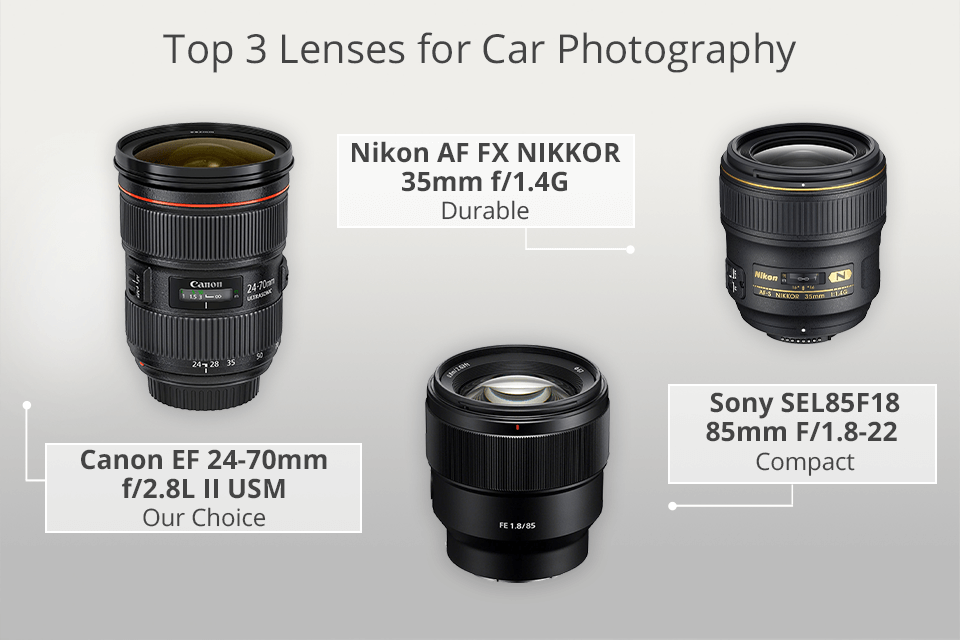
There are a few reasons to look for the best lens for car photography. The rapid growth of the automobile industry influences other business areas, including photography, too. According to the research, the world car manufacturing market was sized at $2.7 trillion for the last year.
If you are involved in realizing crazy car photography ideas, you should have good optics to deal with various scenarios and situations. The average price for reliable lenses starts from $500.
You can capture a race car moving along a track or take portraits of still automobiles. Think about this before making your final decision. Here are the main types of lenses that photographers use to shoot cars:
35mm f/1.4 — It is the best option for taking still object photo ideas. You will have a wide angle that allows you to photograph the whole car without standing at a long distance. Besides, this prime lens ensures a nice bokeh effect thanks to the ability to shoot at wide apertures (low f-stops).
24-70mm f/2.8 — This universal option is suitable for shooting both close and wide shots. Plus, this zoom lens lets you make fast adjustments quickly. As a result, it is perfect for capturing moving cars if they are close enough to you.
70-200mm f/2.8 — You should opt for this lens if from a long distance. You can easily zoom in without coming too close to the track. However, you should check if you have a fast shutter speed to get less motion blur.
Decide what type of pictures you are going to capture: from a distance, a photo inside a car, or a close-up image. Below, you will find the most sought-after models as well as a brief description of their main strengths. Moreover, you’ll learn how to choose camera lenses to take incredible car photos.
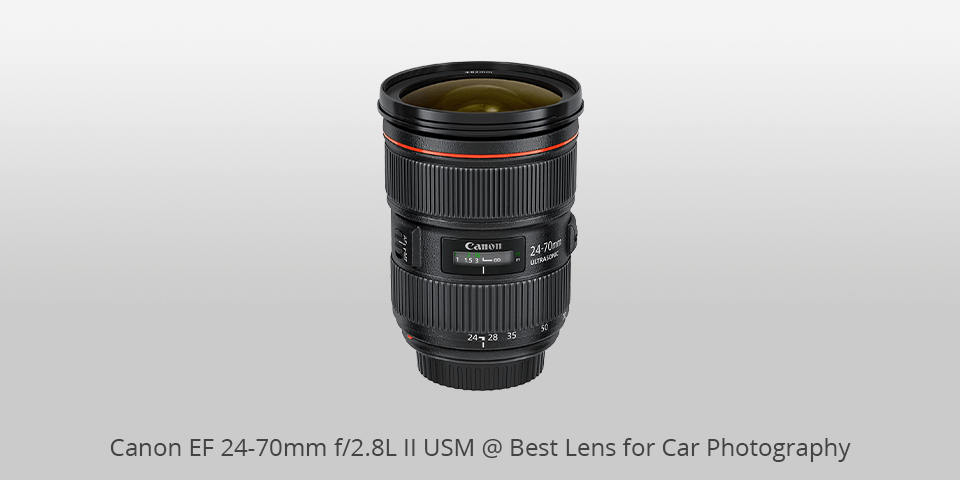
Dimensions: 4.45 x 3.5 x 3.5 inches | Weight: 1.77 pounds | Lens Type: Standard | Autofocus: Yes
When taking pictures of cars, you often deal with lots of movement. That means the ability to adjust a focal length should be your priority. This lens lets you easily switch from a wide 24mm to an almost telephoto 70mm. So you can take top-level photos whether the car is moving fast is still.
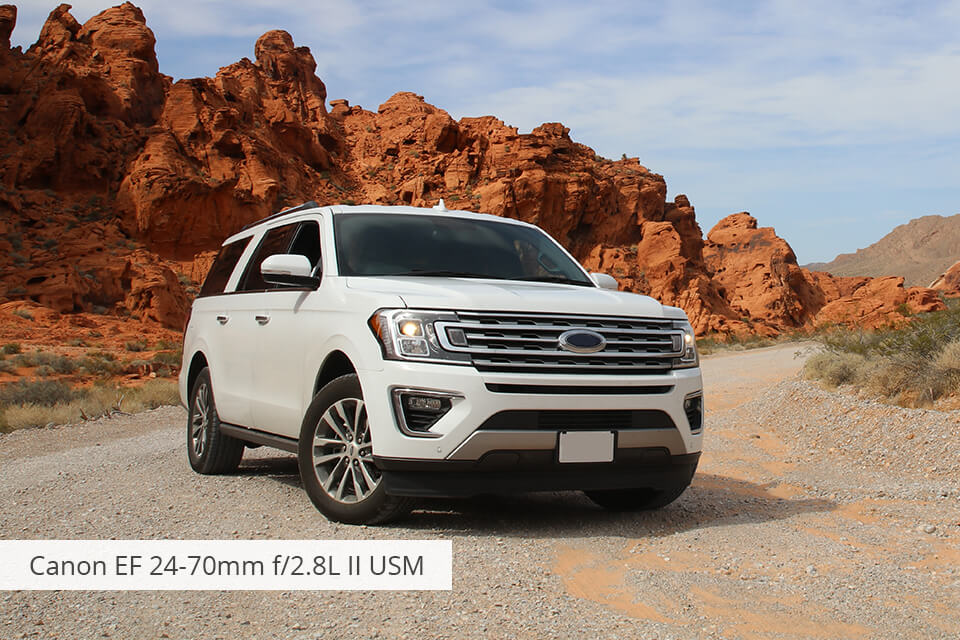
With this lens for car photography, you can take ultra-clear and high-quality pictures no matter the situation. It allows you to work accurately and fast. Thanks to the inside USM lens, you can quickly focus and get crisp photos. The compact size and solid build make this L-series lens an excellent choice.
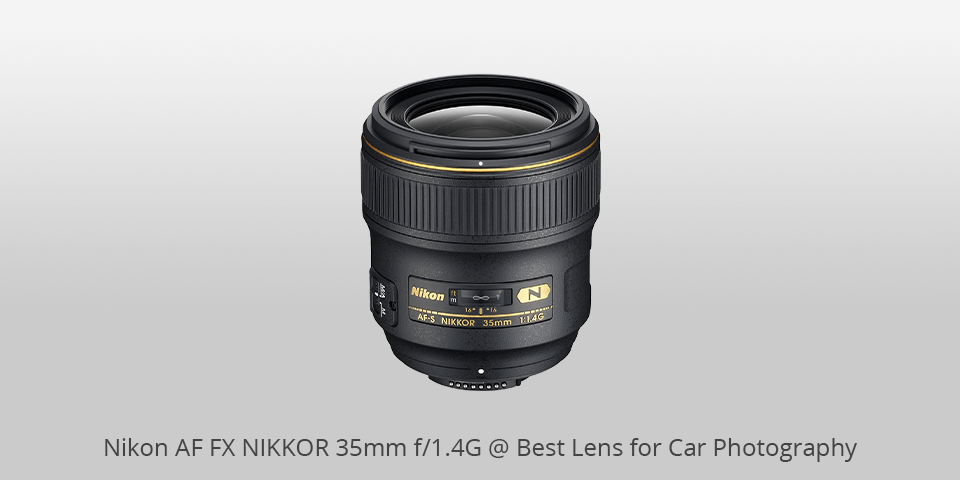
Dimensions: 3.54 x 3.27 x 3.27 inches | Weight: 1.632 pounds | Lens Type: Wide-angle | Autofocus: Yes
This universal wide-angle lens is out of this world. Its focal length of 35mm allows you to shoot cars without any distortion. Even if you are photographing in poor lighting conditions, you will get sharp details thanks to its shallow depth of field and wide-open aperture. A silky smooth bokeh is another advantage of this lens.
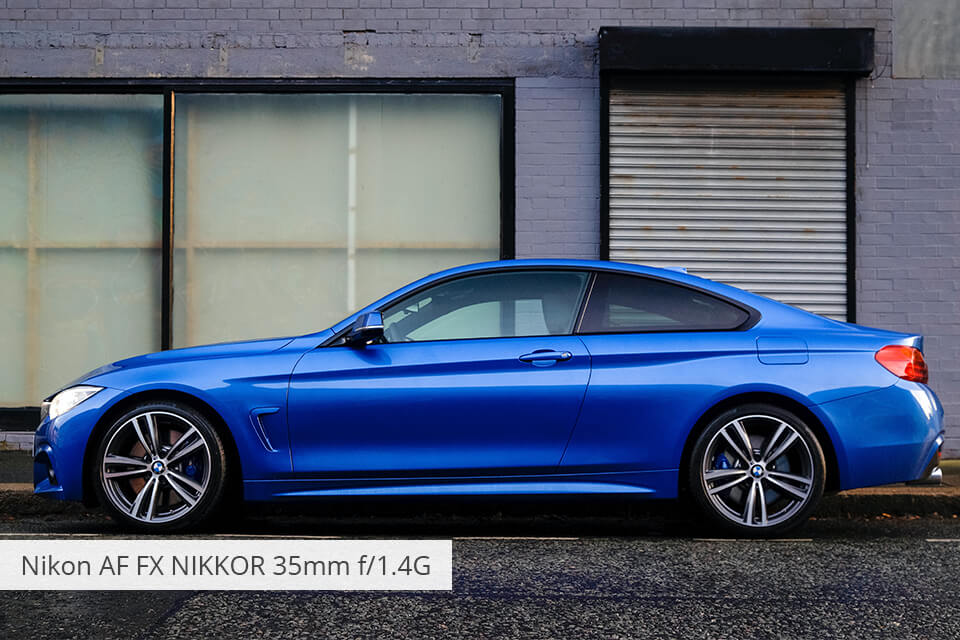
Use the wide aperture from f/1.4-f/4 to get the perfect shallow depth of field for shooting cars. It’s the best car photography lens if you want to distinguish the object from its environment. A nice bokeh and separation between foreground and background are among the key features.
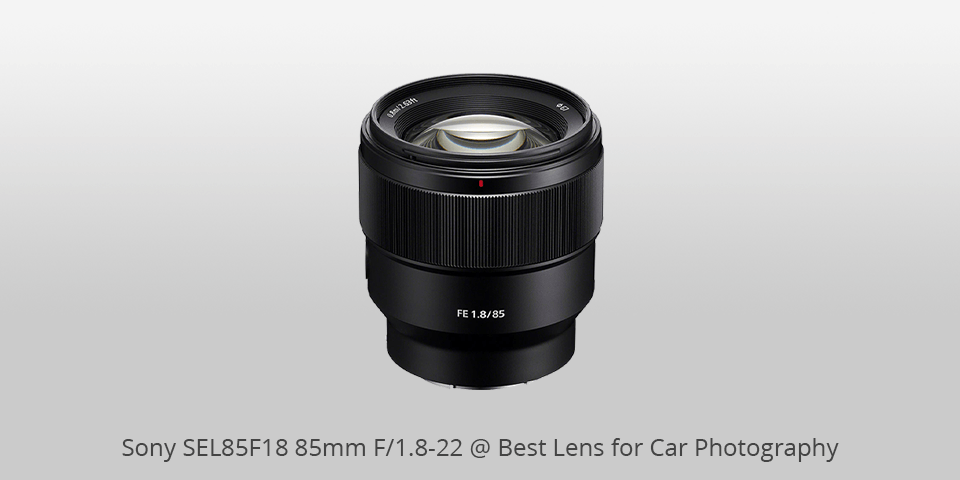
Dimensions: 4.49 x 3.82 x 4.49 inches | Weight: 0.63 pounds | Lens Type: Telephoto | Autofocus: Yes
This is the best lens for car photography in terms of build quality. Solid dust and water protection keep your lens safe in any weather conditions. This optic has 9 elements that are divided into 8 groups. Another distinguishing feature is that it includes only one Extra-Low Dispersion element. Keep in mind a 67mm filter fits this lens.

The fixed focal length is 85mm. a Double Linear AF Motor is used for focusing. You can benefit from both manual and auto focus. It's incredibly accurate and fast, so you can easily shoot moving objects.
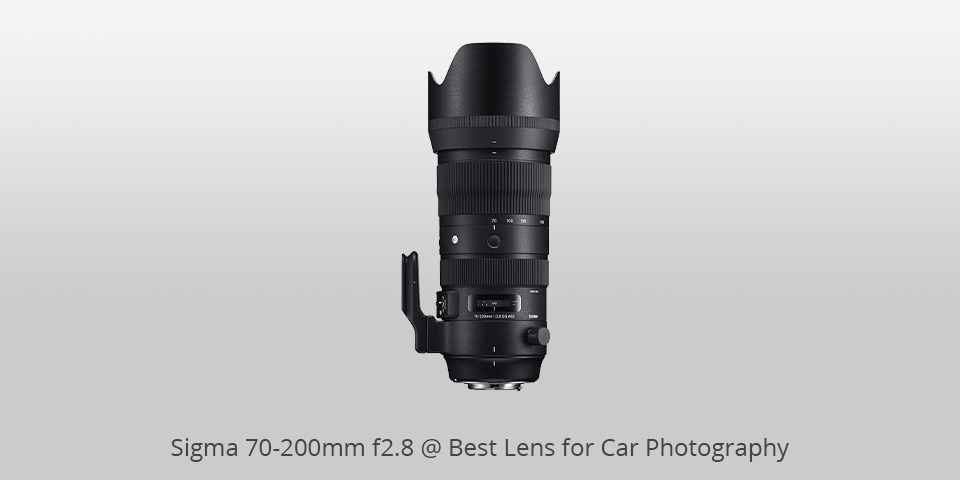
Dimensions: 7.76 x 3.39 x 3.39 inches | Weight: 3.08 pounds | Lens Type: Telephoto | Autofocus: Yes
While this telephoto lens is inferior to the professional 400mm or 600mm options favored by professional racing photographers, it can be a great choice if you are just starting to photograph cars from a distance.
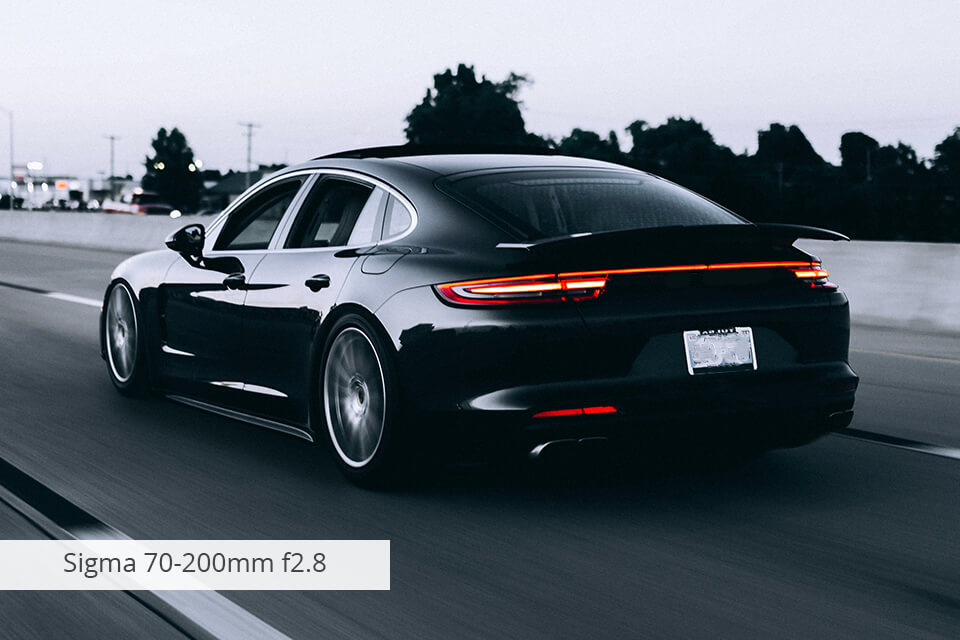
It is impossible to photograph races from too close to the track. Therefore a good telephoto lens is a wise decision. Combine this lens for automotive photography with a variable ND filter to get silky-smooth motion blurs. Experts also recommend using a slow shutter speed of 1/10 - 1/50.
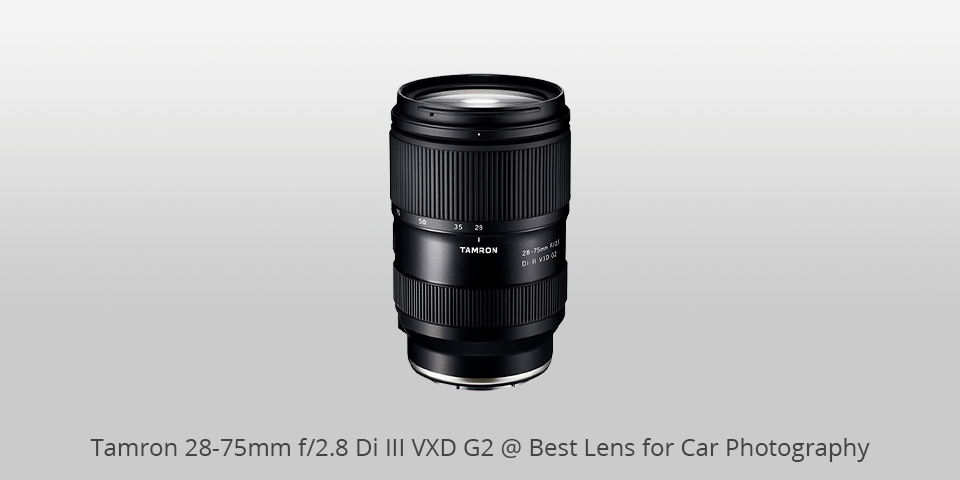
Dimensions: 4.6 x 2.98 x 2.98 inches | Weight: 1.18 pounds | Lens Type: Standard | Autofocus: Yes
This lens delivers sharp, detailed images whether you are taking them inside or outside the car. Impressive background blur helps you bring viewers’ eyes to the main subject.
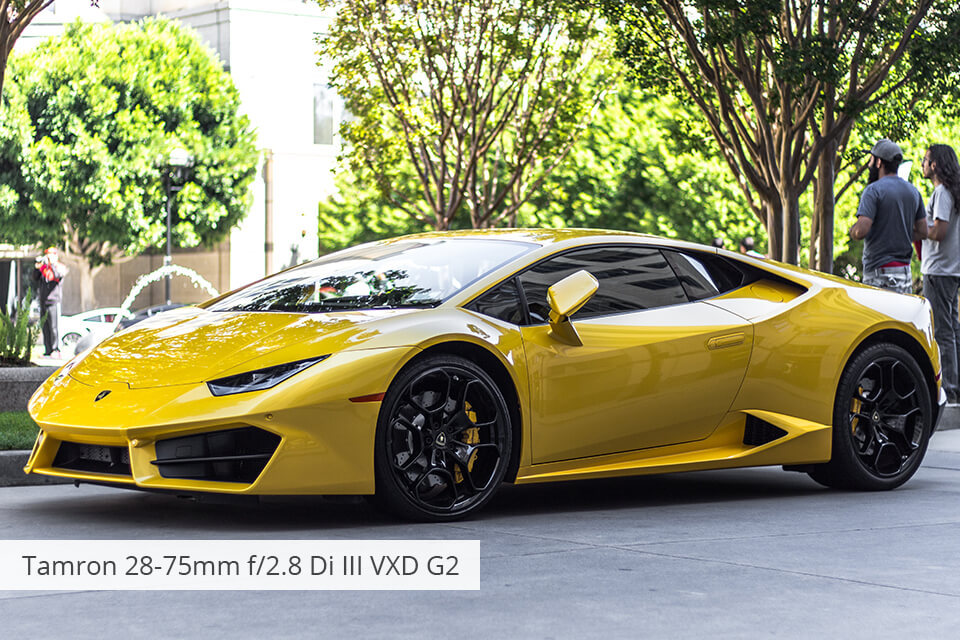
You can take pictures in any weather as its waterproof design will protect your equipment from damage. What's more, the fluorine coatings prevent dust and dirt from getting inside the optics. The silent AF motor makes this model not only one of the most popular car photography lenses but also a perfect option for video shooting.
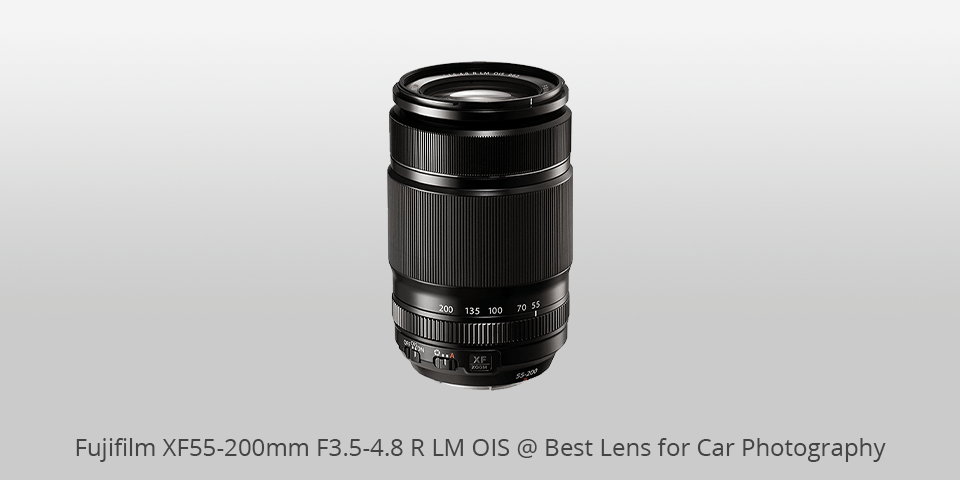
Dimensions: 4.65 x 2.95 x 2.95 inches | Weight: 1.28 pounds | Lens Type: Telephoto | Autofocus: Yes
This lens produces incredible car shots regardless of lighting conditions. Capture the vehicle inside and out and take advantage of a sunny day. You can take pictures of both cars and motorcycles while being at a distance from the subject.
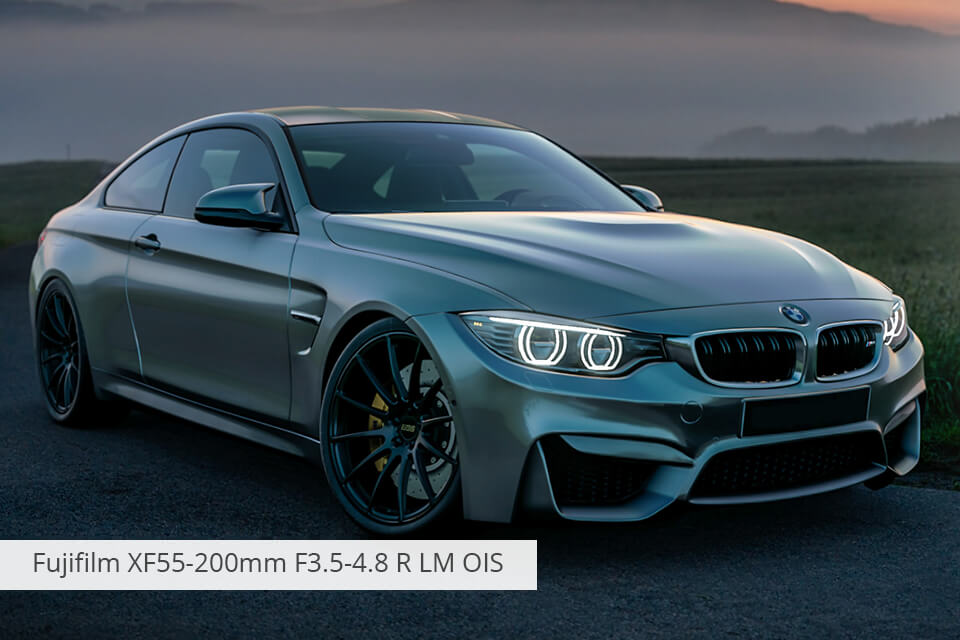
You can apply this Fuji lens to various scenarios. It will come in handy for solving the most complex photography tasks. With it, you can photograph cars from positions you never even dared to think about before.
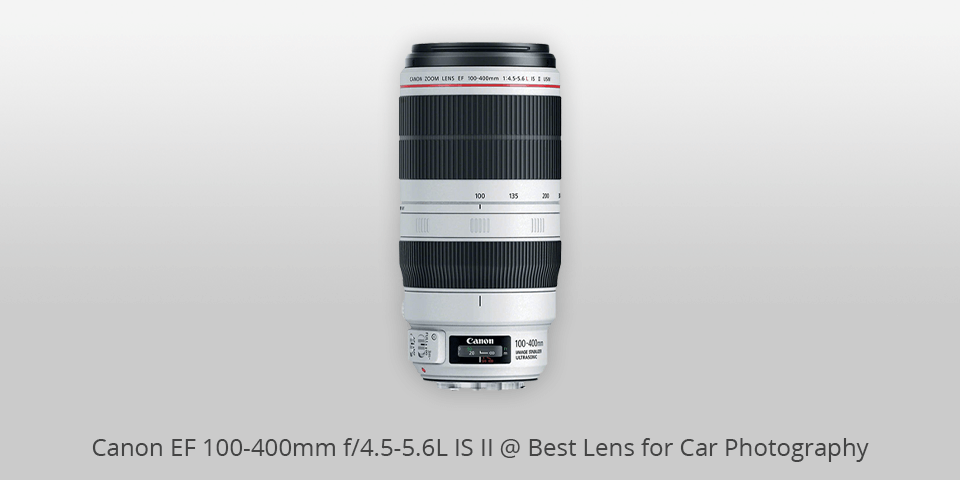
Dimensions: 7.6 x 3.7 x 3.7 inches | Weight: 3.46 pounds | Lens Type: Telephoto | Autofocus: Yes
This Canon lens for car photography is a perfect option for shooting from a distance. It delivers sharp images of top quality. This telephoto zoom is packed with a rotation-styled zoom ring. It allows you to take clear pictures while photographing moving subjects.
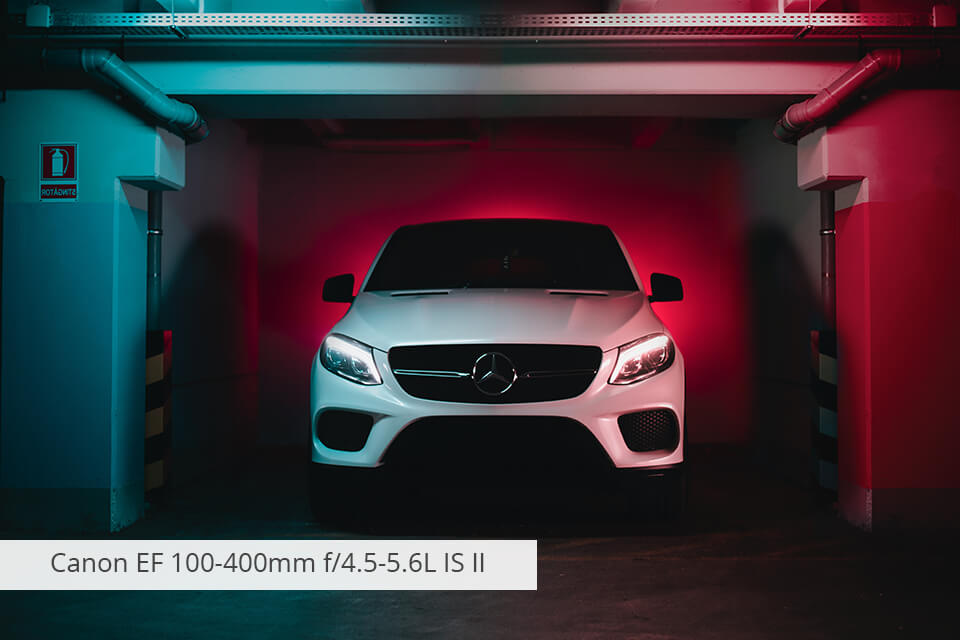
Enhanced image stabilization, stunning optical design, weather sealing, and other features make this lens a good choice for those who are planning to capture distant subjects.
| IMAGE | NAME | FEATURES | |
|---|---|---|---|

|
Canon EF 24-70mm f/2.8L II USM
OUR CHOICE
|
CHECK PRICE → | |

|
Nikon AF FX NIKKOR 35mm f/1.4G
DURABLE
|
CHECK PRICE → | |

|
Sony SEL85F18 85mm F/1.8-22
COMPACT
|
CHECK PRICE → |
The best lens for car photography lets you take stunning pics from every angle. You just need to choose the correct one. There are some factors you should take into consideration to make the right decision.

This parameter shows how much light the lens can focus. It is indicated by “F” numerals. For example, 1:4, F/2.8, and F/4. The models with a lesser number are perfect for night shooting. They deliver less sharp images than the ones with greater numbers.
Decide whether you will photograph the entire car against some background or take some pictures inside.
Opt for a 24mm or 35mm lens if you are taking pictures of cars. It allows you to frame the vehicle beautifully and capture enough background.
If you want to focus on the car more, then a lens with a shorter focal length (e.g. 50mm) is more suitable. A telephoto lens with a focal length of 75mm or longer is a good choice for those who take close-ups or want to emphasize the details of the car.
Does the manufacturer add something to get rid of ghosting, flare, and chromatic aberration?
Find out if a zoom lens delivers the same sharpness and quality throughout the entire focal length range. The perfect choice is a car photography lens capable of providing consistent sharpness in any conditions. Besides, it should produce minimum distortion that you can fix during the image post-processing.
There are full-frame, APS-C, or small three-quarters sensors. We will only consider full-frame and APS-C options in this review. The focal length of the full-frame lenses we’ve already discussed above.
Typically, APS-C lenses feature a focal length clipping factor of 1.6. In other words, if you use a 35mm lens on an APS-C camera, your focal length will be 56mm.
The lens’s capabilities are affected by the sensor type a lot. As a result, the kind of photos you can take also depends on this factor. So, mind the clipping factor when you consider the focal length of an APS-C camera.
If you want to take clear pictures with minimum blur, you should take care of image stabilization. Typically, cameras include some stabilization systems. Otherwise, you must use a lens with inbuilt image stabilization.
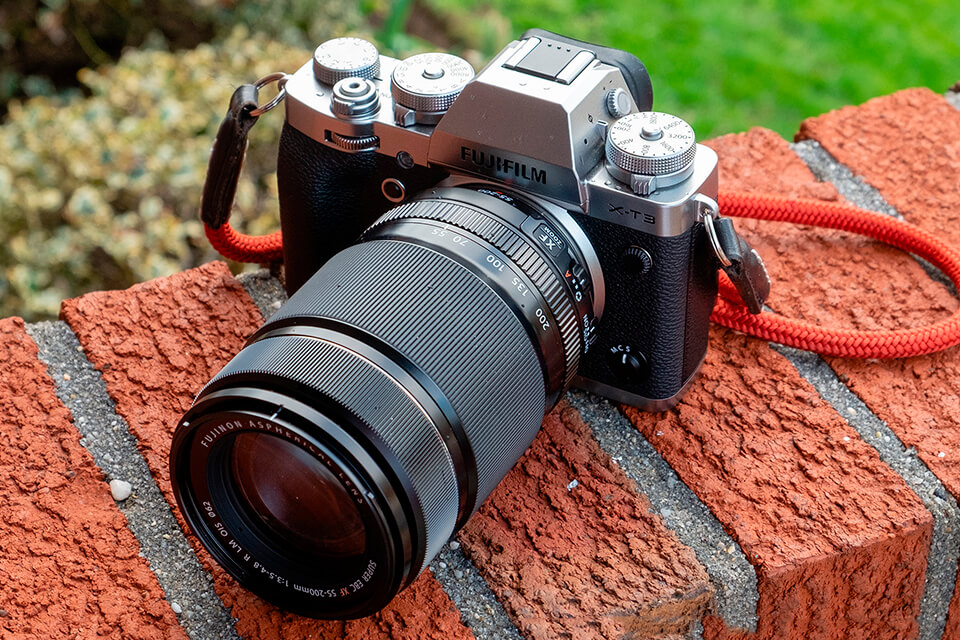
Shooting cars means that you will work outside your studio a lot. So you’ll have to carry all your gear with you. In this case, compactness and small weight are important. That’s especially true if you deal with telephoto lenses.
Though you may shoot in the motor showroom, mostly car photography lenses are used outdoors. This means weather sealing is crucial when buying a lens. Make sure it has reliable dust and moisture protection. As usual, such lenses include an inbuilt structure that protects them from dust or water and allows you to work in all weather conditions.
Nowadays manufacturers offer a huge range of top-notch cameras for photography. However, a good lens is still a must-have thing for professional photographers. Car photography has some particular requirements for the equipment since you often deal with fast-moving objects and still need to get sharp photos. The right lens would help you achieve your goals.
Each type of photography is suitable for various shooting scenarios and purposes. There is no specific lens designed for shooting cars only and I doubt it will ever be. All the options from my list above can be used for capturing cars and come in handy in different situations depending on your needs.
It depends on your goals. This lens type is perfect for taking ultra-sharp pictures of the main subject with a nice blurry background. Professional photographers often opt for this lens because of its small weight, compactness, simple usage and ability to produce high-quality images.
In general, these are the same things you are looking for in any type of lens. The image quality, focal length, aperture, weight, and size are the most crucial. The build quality is another factor to consider. When buying expensive optics, you want to use it as long as possible.
Moisture and dust are the main dangers for a lens. Make sure your equipment is well-protected against various weather conditions. Remember rain, small water splashes and even almost invisible dust can cause a lot of damage to your lens.